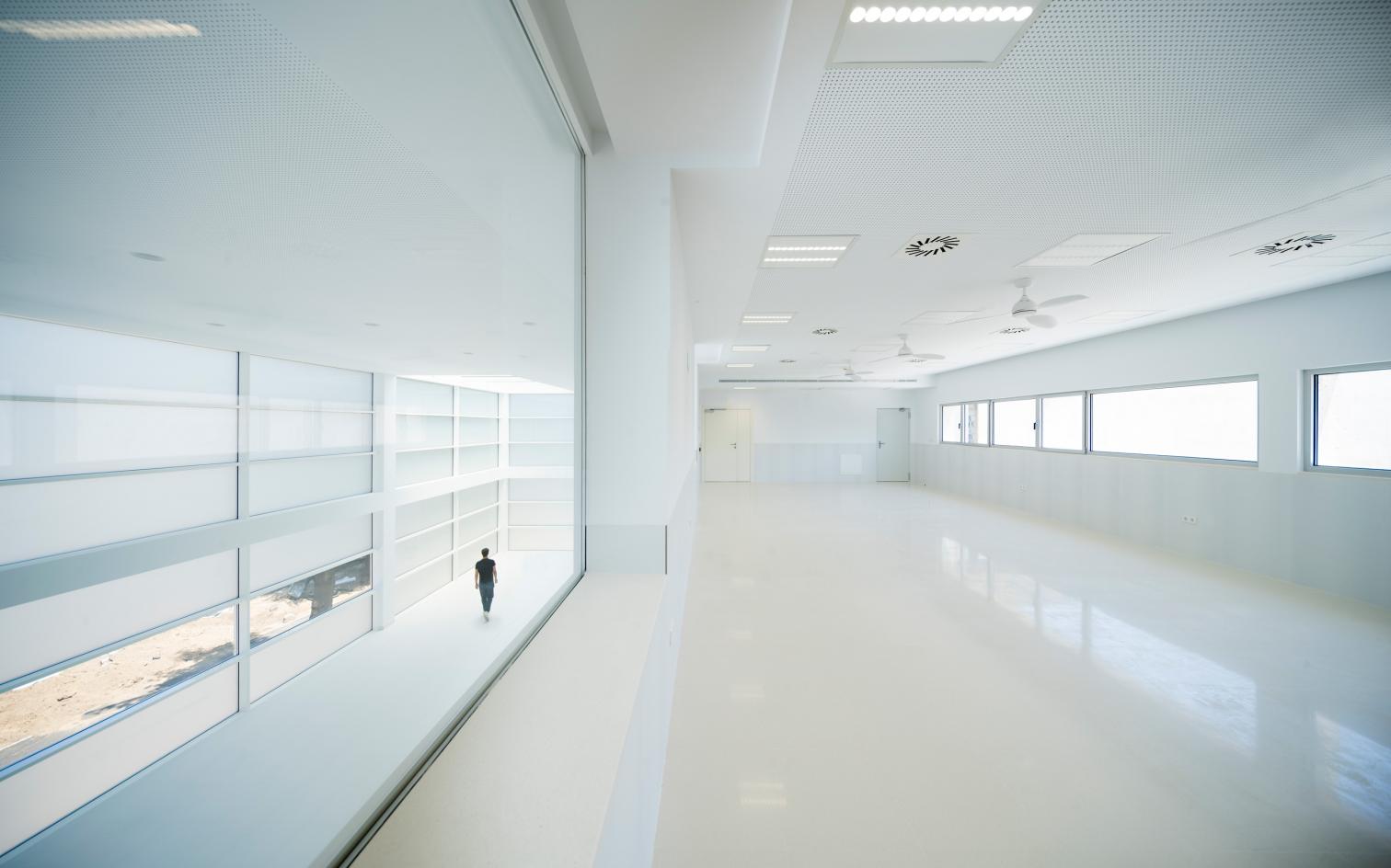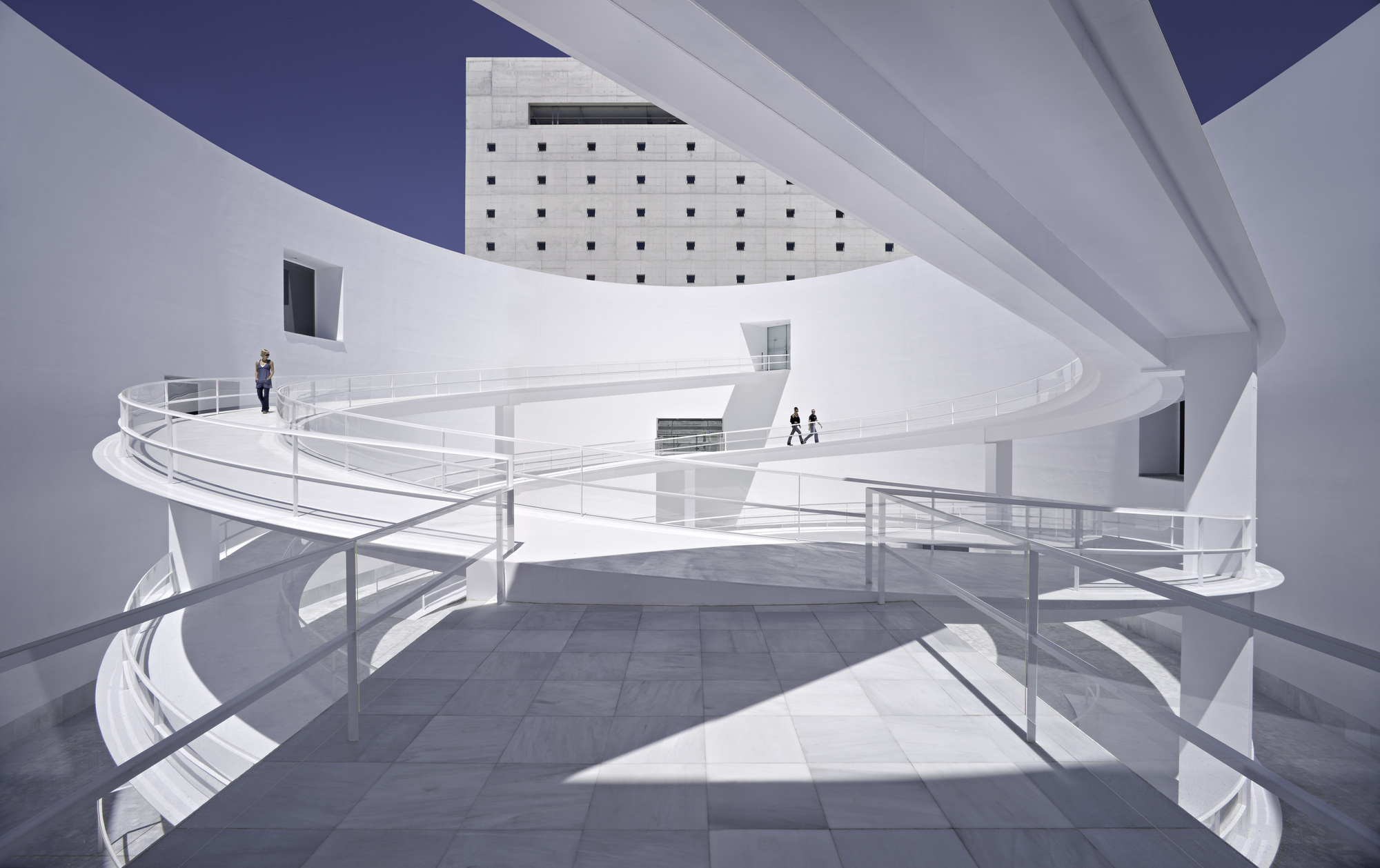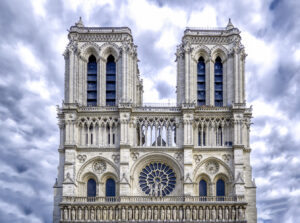Introduction: The Architect Who Uses Air and Time to Build
Alberto Campo Baeza’s voice stands out in the noisy world of modern architecture because it is so clear and rigorous. The Spanish maestro, known for his radical simplicity, has long said that the most important parts of architecture are not steel and glass, but Gravity that makes Space and Light that makes Time. His art is a meditation on these basic principles, turning simple shapes into places with surprising emotional depth.
The addition for the Library of the French Lycée in Madrid’s Parque del Conde Orgaz is the most recent example of this philosophy. This building is not just an extension; it is a transformative work that came about because of an international competition win in 2018. It is a real Brilliant Timeless Masterpiece of Light and Thought.
In the architect’s own words, it is a “box of light” that is meant to stimulate peaceful thought and deep study. This building shows Campo Baeza’s never-ending search for beauty and meaning via simplicity. It shows that sometimes, taking away complication is the best way to give value.

Alberto Campo Baeza Photography: Javier Callejas Sevilla
The Philosophy of Light and Gravity
Campo Baeza’s method is a conscious effort to be pure. It goes beyond trendy minimalism and instead aims for architectural stillness, which is a calm background noise in a busy metropolis. He doesn’t think of light as a secondary element; instead, he thinks of it as the most sumptuous substance there is.
He wants light to interact with volume in a very specific way. He famously said that “Light builds time” while talking about the beautiful sunbeams that move across space like a cosmic clock. Every choice made in the Lycée Library is based on this deep reverence for the forces of nature.
The building’s strength comes from its commitment to the idea that architecture should be a simple, sturdy container for light. The end result is a strict commitment to geometric order and pure volume, which makes a structure that seems both solid like an old building and light like a new one.

Photography: Javier Callejas Sevilla
The “Boîte à Lumière”: A Box of Pure Thought
The Lycée Library is designed to look like a huge concrete box that is exactly 34 x 15 x 12 meters. The outside of the building is made out of this simple, strong volume of exposed concrete, which gives it a stereotomic (earth-related, huge) appearance. It holds the building in place and shows how strong gravity is by not moving.
The outside, which is just stark concrete, is meant to create a contrast to the inside. When you step over the threshold, you enter a world of great contrast: the inside is “completely white, very white, and full of light.”
The walls are a perfect canvas that makes the light coming in brighter and gets rid of shadows. This airy, open, and tectonic interior is where the library’s magic happens. The architect has built a strong, protective wall around an endless, otherworldly world inside that is suitable for calm study.
The Trihedron of Light: A Way to Build Calm
The French Lycée Library’s best design characteristic is probably how it handles natural light. The intentional placement of glazing, especially along the north facade, is what makes this bright space so special.
The whole north side is glazed from floor to ceiling, letting in as much of the soft, steady northern light as possible. This is great for reading because it doesn’t cause glaring glare. This glass wall goes all the way around the building, making it hard to tell where the interior ends and the outside begins.
The design ends with a distinctive architectural touch: the glass continues onto the roof in the northeast corner, creating a geometric work of art called the trihedron of light. This area with three panes of glass lets in light that seems to flow in from nowhere, filling the double-height reading room.
Critics have said that the light here is like “snowy light,” which is a dazzling, almost overwhelming whiteness that makes it feel like there is more light inside than outside. This trihedron turns the building from a mere box into a vessel, making sure that the light that comes in is not simply light, but an architectural presence that can be felt. It’s a detail that makes you feel good and turns reading into something deep and timeless.

Photography: Javier Callejas Sevilla
A Place to Learn that Feels like Home
The Library is very human in its purpose, even if it uses very simple materials like concrete, glass, and white paint. Campo Baeza’s main goal is not to make things abstract, but to make sure that “happy people are in my buildings.”
The main reading room is the heart of the structure. It is a large, two-story space that serves as a focal void that other, smaller functional spaces, including offices and work areas, open up to. This setup makes the library’s role as a uniting educational place stronger by creating a hierarchy of space.
The carefully managed light, which is soft and surrounds you, creates a place where you can focus and think clearly. The white walls and pure light make it possible for pupils and teachers to escape the visual chaos of the outside world. This makes it a really hallowed location for intellectual work. The shape is simple enough that the focus stays on the books, the students, and the light that brings them all together.
Conclusion: A Lasting Impact in Glass and Concrete
The Library of the French Lycée is more than just a winning competition entry or a building addition; it is a clear statement about how architecture based on basic principles may last for a long time. Alberto Campo Baeza’s design is both functional and cost-effective, and it also looks amazing.
He has built a beautiful building by learning how gravity and light work together. Heavy concrete frames light that seems to come from nowhere. The result is a location that will last forever—a peaceful monument that will inspire many kids for years to come. It reminds us that the most complex buildings are often the simplest, and that the best way to make a big impression is to use the simplest materials, like light.
For more content like this CLICK HERE!!
Reference:
Library for Lycée Français in Madrid – Alberto Campo Baeza | Arquitectura Viva
Library Of The French Lycée / Alberto Campo Baeza





